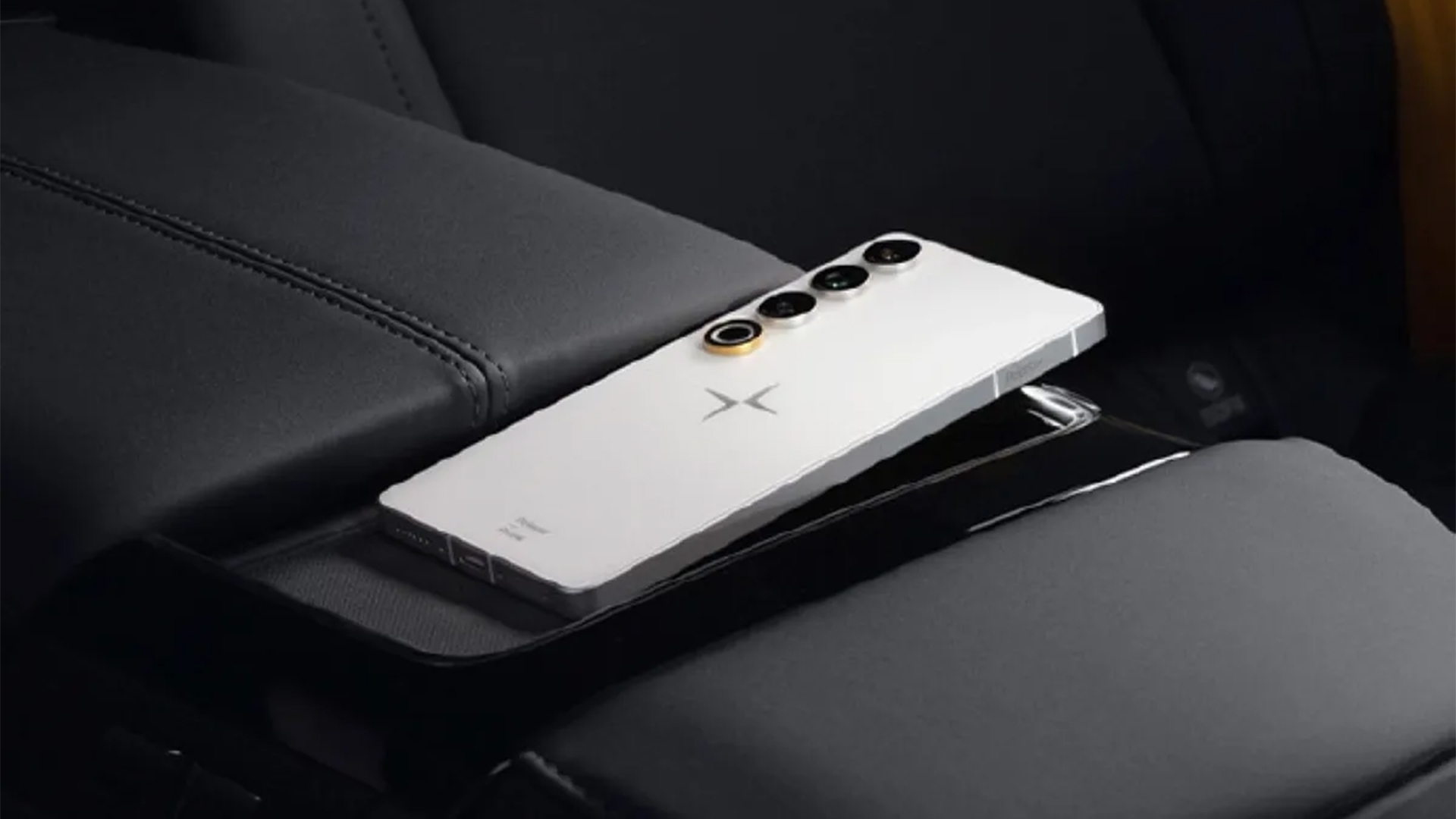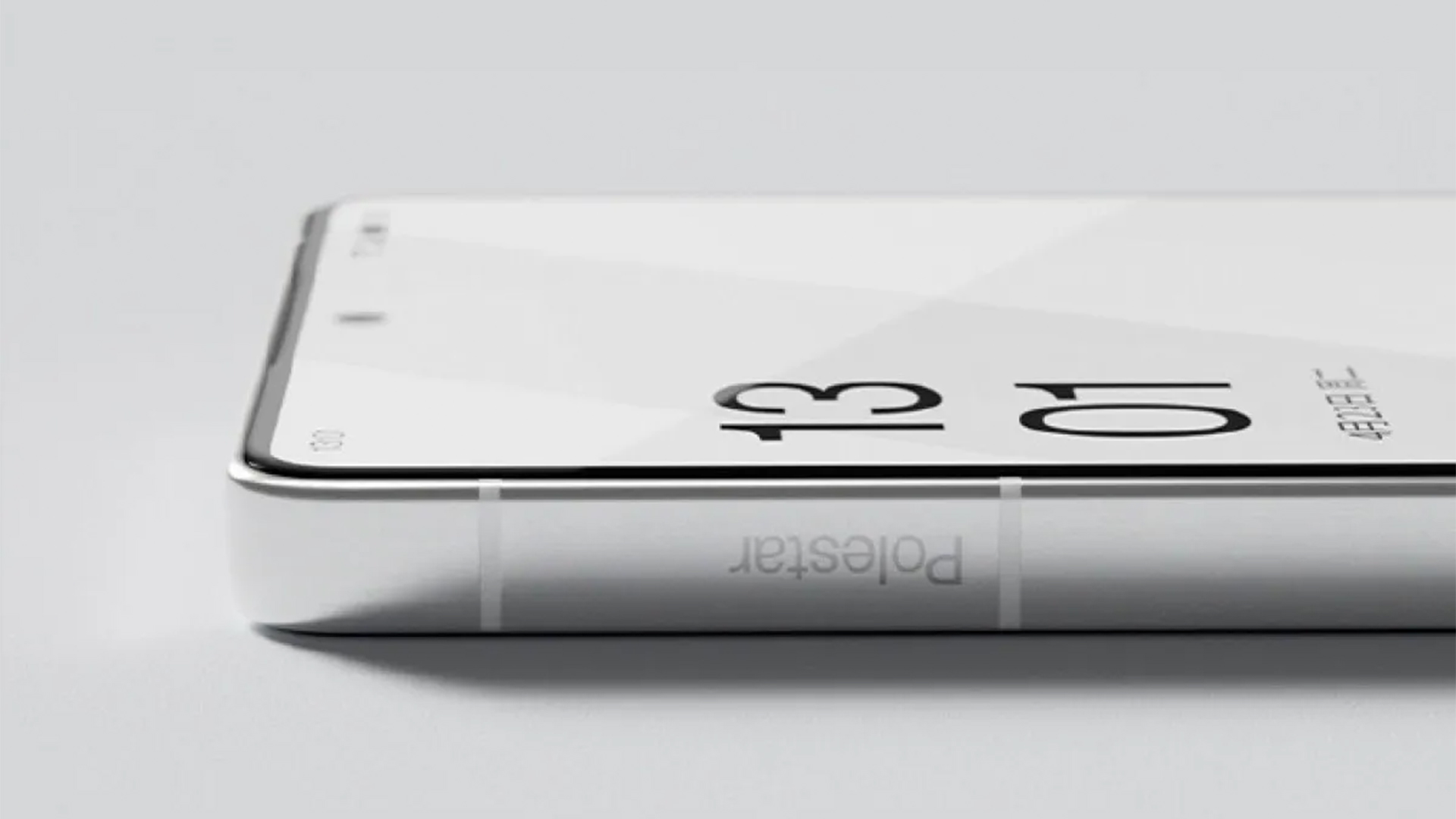Polestar's new smartphone looks like a step up from Android Auto and CarPlay
A matching phone for your EV could make sense after all

Polestar teased that it was working on its own smartphone at the Guangzhou Auto Show late last year, with Polestar CEO Thomas Ingenlath telling CNBC "where you have an opportunity to link these two worlds, without any border ... then you can really have a seamless transition."
Now, images have surfaced on Chinese website Weibo (via Android Police) of the production Polestar phone, with deliveries slated to begin in the domestic market towards the end of April.
There's very little in the way of specs, but we do know the phone has been co-developed by Meizu, a smartphone brand owned by Geely, which also owns Polestar and sister company Volvo.
An unboxing video that surfaced on YouTube reveals that the design includes four cameras on the rear and an extremely thin bezel around the main screen, while Android Police suggests it features an innovative 21:9 aspect ratio and a screen size of around 6.5 inches.
But more than a simple branding exercise, the Polestar phone is tipped to run Xingji Meizu’s FlyMe OS, an operating system that also appears in Polestar vehicles sold in China – the recent Polestar 4 being an example.
This is due to the fact that Android Auto, as well as Apple CarPlay, don't exist in the Chinese market. So automakers have been turning to custom-build platforms for their infotainment operating systems.
"It’s not just good enough to bring a great European design to China, you have to be very, very special about what you offer to the market when it comes to software," Polestar CEO Thomas Ingenlath told CNBC.
Get daily insight, inspiration and deals in your inbox
Sign up for breaking news, reviews, opinion, top tech deals, and more.
Auto Evolution took deep dive into Meizu’s Flyme Auto last year and concluded that it brings "the mobile phone and the car in total sync", unlike anything that Apple CarPlay and Android Auto can currently do.
The ability to customize its backgrounds and wallpapers like a laptop or tablet, run multiple apps at once in various windows and use the smartphone's camera for video calls are just a few examples of this seamless integration. Not to mention the ability to use a smartphone as a wireless gaming controller, complete with immersive sound pumped through its smaller speakers.
Where Elon Musk merely hinted that Tesla could make its own smartphone, in a reaction to the notion that Apple and Google could block Twitter – or X – access from their respective app stores, the EV innovator is yet to confirm anything.
It appears that alongside slipping EV market share in China, Tesla is also falling behind the sort of tech innovation that could help it remain competitive.
Analysis: China guns for EV software domination

While numerous smartphone makers have toyed with automotive co-branded devices, such as OnePlus with its 6T McLaren Edition and the Porsche Design Huawei Mate 20 RS, very few have pushed the project to include greater integration with the vehicle in question.
Although the Polestar phone is likely to assist Meizu in pushing further upmarket with more luxurious products (it currently sells mid-tier smartphones in China), it also appears that the Swedish brand is promoting ever-more integration with devices and the infotainment systems found in its stylish electric vehicles.
The ability to access vehicle data and information through Meizu’s AI-powered voice assistant, both in the car and potentially from Polestar’s smartphone, is something we haven’t yet seen in Western markets to date.
Plus, the ability to make a scheduled service appointments using natural language is something that numerous manufacturers, including Kia and Hyundai, have teased but likely won’t come to fruition until 2026 at the earliest.
Despite many Western customers owning an iPhone or Android-powered device, the experience of transferring from smartphone to infotainment system remains far from seamless. Apple CarPlay and Android Auto tend to offer a restricted version of your smartphone, rather than becoming an extension of it.
With the rise of Chinese smartphone brands, such as Huawei and Xiaomi, already stating they will produce EVs in China, Polestar is doing the smart thing by future-proofing its models with accompanying devices that will work seamlessly with infotainment systems.
Whether or not it will be a success is yet to be seen, but the speed of EV adoption and innovation in China is breathtaking, and many legacy automakers are finding they are falling well behind in the tech race.
Polestar’s Geely ownership ensures the brand understands its market and the Polestar phone is the perfect example of delivering solutions that its customers clearly want.
You might also like

Leon has been navigating a world where automotive and tech collide for almost 20 years, reporting on everything from in-car entertainment to robotised manufacturing plants. Currently, EVs are the focus of his attentions, but give it a few years and it will be electric vertical take-off and landing craft. Outside of work hours, he can be found tinkering with distinctly analogue motorcycles, because electric motors are no replacement for an old Honda inline four.